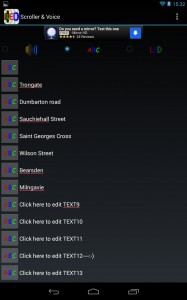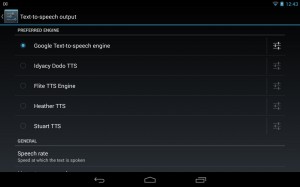Preventing unauthorised use by ‘locking’

Most smartphones/tablets have a way of locking the screen so that access to your device is protected by e.g. a password, pin number/code, gesture, face and fingerprint recognition,… new methods are coming along all the time. The lock will usually start when you haven’t used your device for a few minutes – sometimes you can choose what length of time this should be – shorter is more secure. Locking is strongly recommended, especially if you are storing sensitive personal data on your device or traveling. Locking will prevent others from just picking up your unattended phone and using it without your knowledge. Be careful though that you choose a method of locking that you’ll be able to remember how to use or you’ll lock yourself out of your own device! If you’re clumsy, locking also helps stop you unintentionally press buttons or launching apps e.g. when the device is in a pocket or bag, helps prevent you making accidental phone calls or draining your battery.
Loss/Theft
Hand-held devices though easy to carry can also be easy to lose, small thin devices may slip through a gap without you noticing, you might leave a device behind on public transport etc. (Tip: if you’ve lost your device try contacting their ‘lost property’ departments, you’ll find the details on your travel company website). If you own a device have a think about who/where should be contacted if someone who doesn’t know you comes across your device, if it’s your mobile phone you obviously can’t use your mobile number as a contact. So how could a well-intentioned person contact you? You might want to physically write a contact phone number on a label stuck to the back of a device – but don’t put too much personal info here as you don’t know who will be reading it. Electronically, some lock screens allow you to type some text to be shown even when someone is prevented from using any of the features of the device.
At the moment iPhone/iPod/iPad don’t have customised lock screen text built in but what some people do is to create a customised wallpaper containing contact details and use that on their lock screen
- Add “Please Return To” Text to iPad Lock Screen (uses free app Foto Editor – Fotolr by Tiny Piece Co., Ltd
- If Found Lock Screen PAID, £0.69
Apple has some additional advice
Organisation devices
If you are part of an organisation owning multiple devices it’s also a sensible idea to add security tags with a unique number or code to your devices and keep an internal register of codes and a note of who has been issued a device and/or where it might be found. You can find security labels where you buy business labels or stationery (might be called ‘asset tags’ or ‘permanent labels’, more expensive versions for security purposes can be tamper-proof). Labels are also very useful for any auditing/insurance purposes so you know exactly which device is which.


